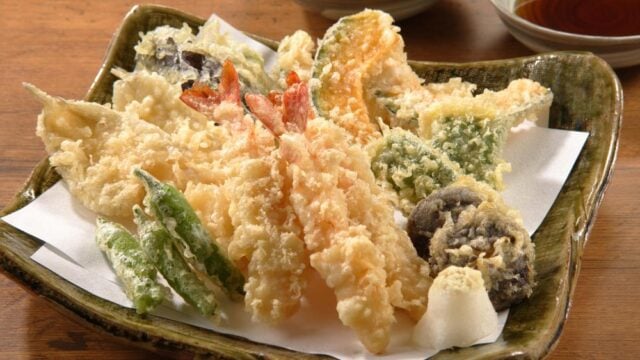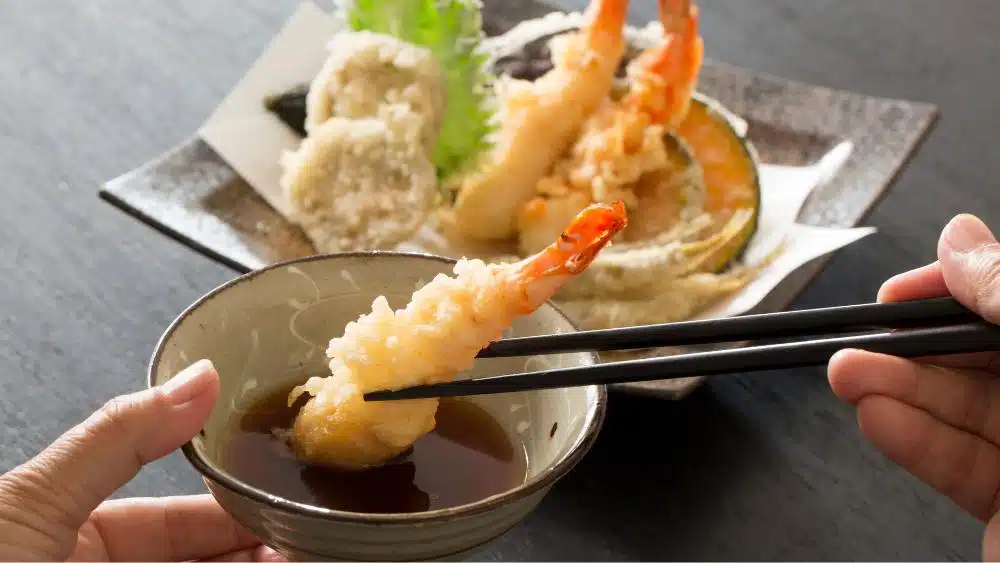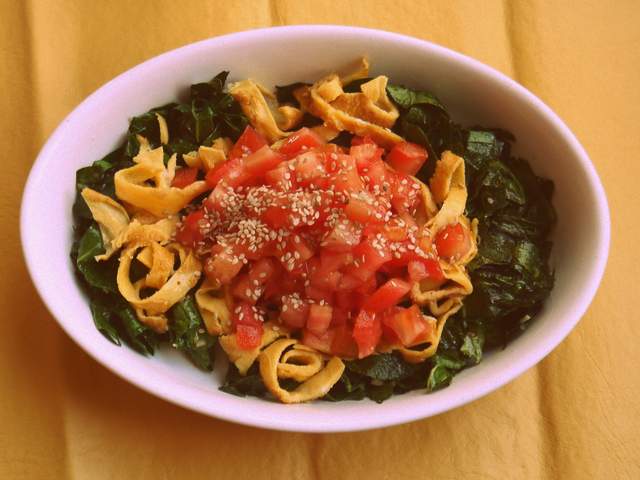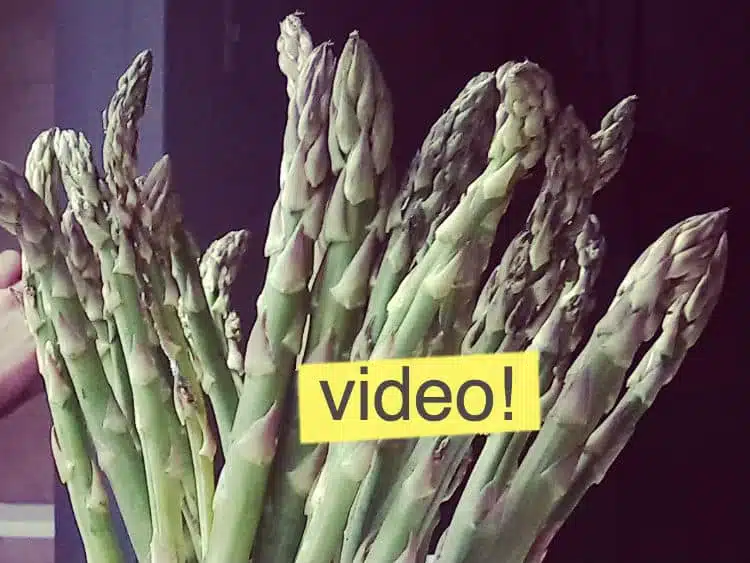Welcome to Paulina Cocina's information section! I mean, there isn't even a section, but let's pretend there is, because today, my dear friends, we're going to learn a lot about a Japanese cooking method that quickly became popular around the world.
Tempura , through technique, experimentation, and dedication, achieves tenderness on the inside and crispiness on the outside. Just like we should all be. Don't you think?
So we suggest you save this post and share it with your loved ones, and with those you don't love, too, because knowledge takes up no space and all that stuff that gets said. Prepare yourselves because we're coming with fistfuls of truth.
Content table
About tempura
But first things first: What is tempura?
Tempura frying light, crispy foods in hot oil. Although it's most commonly associated with seafood and vegetables, other ingredients such as meat and fruit can also be used. The tempura technique was introduced to Japan by Portuguese missionaries in the 16th century.
For example, in this recipe we see a process very similar to the one we follow to make rabas .
The name of this dish comes from the Portuguese term " tempêro ," which means " seasoned ." Originally, it was simply made by coating food in flour and deep-frying it, but over time it has evolved to include a wider variety of ingredients and a more refined frying technique.
To make tempura , the ingredients are coated in a mixture of flour (usually wheat flour) and cold water. The mixture should be lightly beaten, but not overly so as to keep it lumpy, which helps create the characteristic crispy texture.
The flour used in this recipe is a mixture of wheat flour and cold water . The proportions may vary depending on the recipe, but generally, one part flour is used with one part water , although this may vary depending on the desired result.
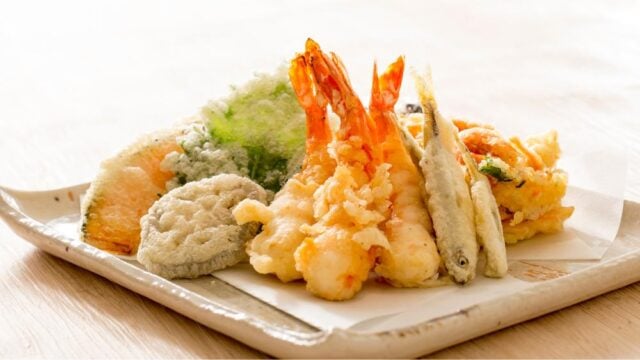
4 interesting facts
- Tempura It can also be accompanied with grated ginger and horseradish, which help enhance the flavors and balance the richness of the fried food.
- Although this dish made with seafood and vegetables , it has evolved over time to include a wide range of ingredients. Some examples include shrimp, zucchini, eggplant, mushrooms, peppers, squash, and more. Modern versions have even been developed that incorporate non-traditional ingredients.
- In Japan, this dish is served delicately, usually on absorbent paper to remove excess oil. Careful presentation is an important part of the experience.
- Tempura is enjoyed throughout Japan in specialized restaurants called "tempuraya" or Japanese cuisine establishments. It has also become popular in many other parts of the world due to its unique and pleasant flavor .
Mastering the art of tempura, that is the question
tempura-making technique involves a process that combines the lightness and crispiness characteristic of this Japanese dish. The process is a culinary technique that combines simplicity with the exquisiteness of the final result. To achieve perfect tempura, the right tempura batter is required.
The battering technique is relatively simple, but requires attention and precision. The most common ingredients for making tempura include seafood (such as shrimp and squid) and vegetables (such as zucchini, eggplant, and peppers), although other ingredients such as meat and fruit can also be used.
The goal is to achieve a crispy, light texture while keeping the interior tender and juicy. Appreciating tempura's crispy is an essential part of the culinary experience.
The combination creates a balance of flavors and sensations on the palate. This characteristic has become a hallmark of tempura and is one of the reasons why it is so popular around the world.
Choosing the crispiest: panko or tempura
Panko is a type of Japanese breadcrumb commonly used as a coating for deep-fried foods. It's known for its crispy, light texture and is used to achieve a crunchy outer coating on deep-fried dishes.
Tempura , on the other hand, is the technique of frying food in hot oil after coating it with a light batter. Tempura's crispy texture comes from the mixture of flour and water in which the ingredients are dipped before frying.
Since they are different elements of gastronomy, it is difficult to compare them since the result obtained is different.
Follow on Instagram ( here )
and on YouTube that I upload new videos every week ( click here )
Tempura recipe
Step 1: Prepare the ingredients
Wash, peel and cut the ingredients chosen for the tempura into appropriately sized pieces.
Tip: Use fresh, high-quality ingredients . The freshness of the ingredients influences the flavor and texture of the tempura.
Make sure they are dry before dipping them in the batter.
Step 2: The dough
Prepare the tempura batter just before using it. The flour and cold water should be mixed lightly to maintain small lumps, which will contribute to the crispy texture.
Before making the batter, make sure all the ingredients are at the right temperature . The key to good tempura is keeping the batter as cold as possible.
1. First, make a dry mix: In a large bowl, combine the flour and salt.
2. Add the egg: Lightly beat an egg and add it to the flour and salt mixture.
3. Add cold water : Gradually add the cold water to the bowl while gently mixing the ingredients. Do not overmix.
Optional tip: To keep the dough cold, you can add a couple of ice cubes to the bowl while you work. This is especially helpful if you're cooking in a warm environment.
Use immediately: Use the dough immediately after preparing it for best results. If you let it rest for too long, it will lose its light and airy texture.
Step 3: Frying
Heat the oil in a frying pan or deep fryer. Dip the ingredients into the tempura batter, making sure they're well coated.
Oil Temperature : Heat the oil to the correct temperature, around 170-180°C. A cooking thermometer can be helpful to ensure the oil is at the correct temperature.
Place the coated ingredients in the hot oil. Fry in small batches at a time, turning them to brown evenly.
Finally, place the fried ingredients on paper towels to remove excess oil. Let them rest briefly so the outer layer can set and become even crispier.
5 very useful tips
- Frying test : Before frying all the ingredients, test with a small piece of batter. It should bubble, float in the oil, and turn golden brown within a few seconds.
- Don't overcook : Don't put too many ingredients in the oil at once, as this could cool it down and cause the tempura to absorb more oil.
- Flash frying : Fry ingredients in small batches at a time and quickly to maintain a constant oil temperature.
- Draining : Place the fried ingredients on absorbent paper to remove excess oil.
- Immediate consumption : Tempura is best served immediately after frying, as its crispy texture is lost over time.
